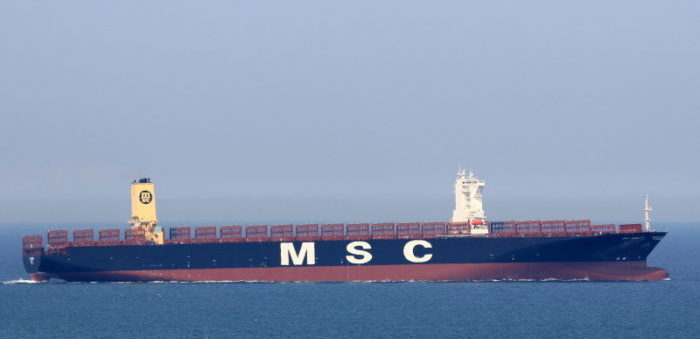Port of Long Beach accommodated Mediterranean Shipping Company’s MSC Jewel, the cleanest container ship to visit the United States, on July 12. The vessel arrived at Total Terminals International’s Pier T facility.
MSC Jewel emits 75% less than previous generation vessels
… Port of Long Beach highlighted.
Specifically, the vessel has a capacity of 14,436 TEUs and was constructed in 2019. It is powered by Tier III diesel engines (main propulsion and auxiliary power), which are 75% cleaner than the Tier II standard set by the IMO.
Long Beach Harbor Commission President, Tracy Egoscue, commented
Tier III ships just started entering the global fleet. Achieving this milestone is amazing, and we are grateful MSC chose us for this visit.
The Clean Air Action Plan Update, which was launched by port of Long Beach and port of LA in 2017, aimed at strategies to accelerate the timeline that cleaner ships would start calling the Port of Long Beach, Egoscue further noted.
[smlsubform prepend=”GET THE SAFETY4SEA IN YOUR INBOX!” showname=false emailtxt=”” emailholder=”Enter your email address” showsubmit=true submittxt=”Submit” jsthanks=false thankyou=”Thank you for subscribing to our mailing list”]
In the meantime, Port of Long Beach Executive Director Mario Cordero continued that the Port of Long Beach strives for shipping excellence and sets goals for a better and greener shipping environment.
All MSC vessels that call at California ports are shore-power equipped, allowing them to plug into the landside electrical grid to further reduce emissions when berthed. Port of Long Beach launched in 2005 the ‘Green Flag Incentive Program’, which was recently approved by many vessels, as more than 135 shipping lines voluntarily participated in the incentive.
Recently, the Port of Long Beach announced that it is moving towards the construction of a new on-dock rail support yard that will better-assist the flow of cargo, improve roadway traffic and reduce emissions by decreasing trips. The Pier B On-Dock Rail Support Facility was firstly approved in January 2018, as a project that would move the cargo faster and a part of the port’s plan to improve their competitiveness and mitigate truck trips, which would lead in reducing emissions.






























































